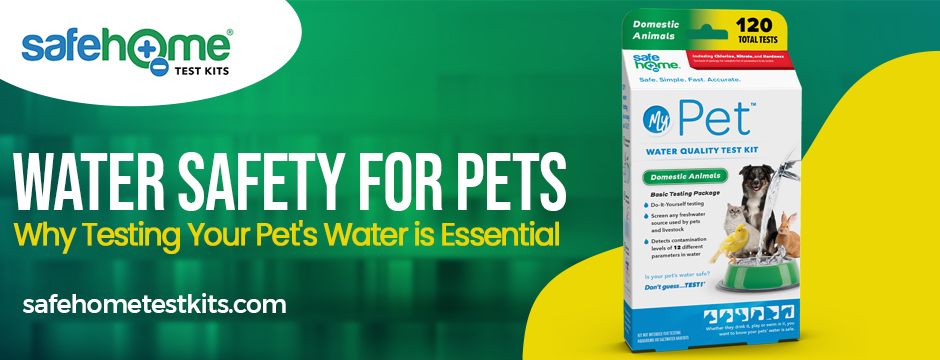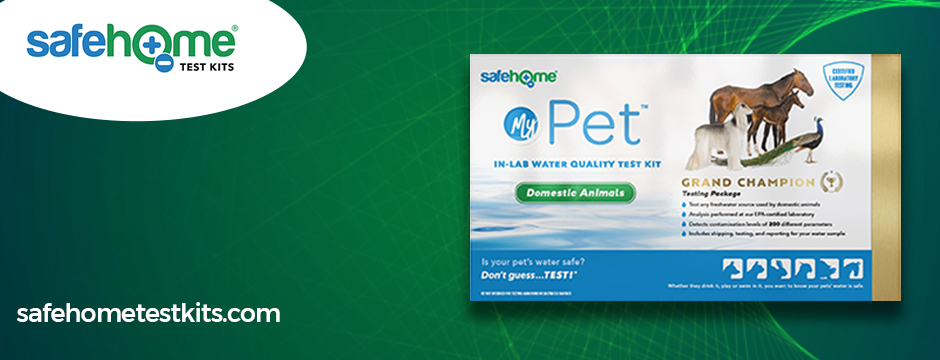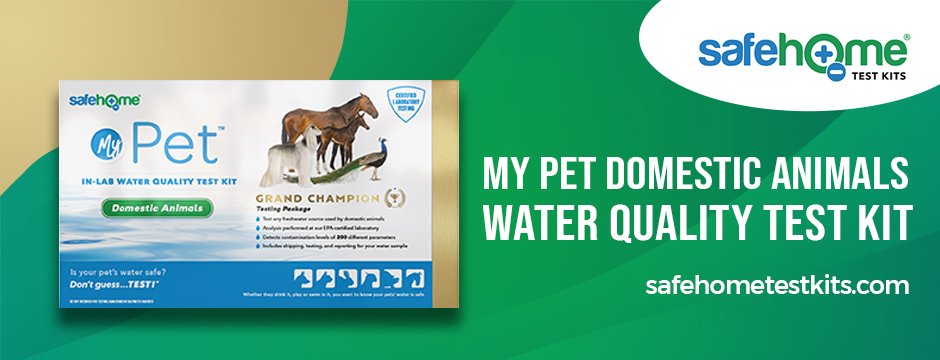Water Safety for Pets: Why Testing Your Pet's Water is Essential

As pet owners, we go to great lengths to ensure the health and well-being of our furry companions. From providing nutritious food to regular vet check-ups, we strive to create a safe and loving environment for them. However, one crucial aspect that often goes overlooked is the quality of the water our pets consume. Just as clean water is vital for our health, it is equally essential for our pets. This comprehensive guide delves into the significance of water safety for pets and why testing your pet’s water is crucial.
Understanding the Importance of Water Quality for Pets
Water is a life-sustaining element for all living beings, including our pets. It is critical in various bodily functions, such as digestion, hydration, and temperature regulation. Like humans, pets rely on water to maintain their health and well-being. Ensuring that their water is safe and free from contaminants is paramount.
Health Risks of Contaminated Water
Contaminated water poses a significant threat to pets’ health. Bacterial, chemical, and physical contaminants can lead to various health issues, from gastrointestinal distress to more severe complications. For instance, harmful bacteria such as E. coli and Salmonella can cause vomiting, diarrhea, and even kidney failure in pets. Similarly, exposure to chemicals like lead and pesticides can lead to chronic health problems over time.
Connection Between Water Quality and Pet Behavior
Pets are sensitive to environmental changes, including the water they drink. It’s not uncommon for pets to exhibit changes in behavior when they encounter poor-quality water. They might avoid drinking from their water bowl, become lethargic, or display signs of discomfort. In some cases, pets might drink from alternative sources, such as puddles, which can increase the risk of exposure to harmful contaminants.
Common Water Contaminants and Their Sources
Understanding the types of contaminants that can be present in water sources is crucial for addressing water safety for pets.
Bacterial Contaminants
Bacteria like E. coli, Salmonella, and Campylobacter are commonly found in water sources and can have dire consequences for pets. These bacteria can originate from stagnant water, animal waste, or unclean water bowls.
Chemical Contaminants
Chemicals such as lead, chlorine, and pesticides can seep into water sources and pose serious health risks to pets. Lead, for example, can enter water from old pipes, while chlorine used for water treatment can result in an unpleasant taste and odor.
Physical Contaminants
Physical contaminants, including dirt, debris, and small particles, can make water unpalatable and unsafe for pets. These particles can enter water bowls or outdoor sources through environmental factors.
Types of Water Testing for Pets
Testing your pet’s water for safety is a proactive step toward ensuring their well-being.
Home Water Testing Kits
Home water testing kits provide a convenient way for pet owners to assess the quality of their pets’ water. These kits typically come with easy-to-follow instructions and allow you to test for various contaminants, from bacteria to chemicals. They offer quick results, empowering pet owners to take immediate action if any issues are detected.

Professional Water Testing
Some pet owners opt for professional water testing services for a more comprehensive analysis. These professionals have access to specialized equipment and expertise to accurately detect a wide range of contaminants. While this option may come at a higher cost, it offers the advantage of professional analysis and recommendations.
Frequency of Water Testing
The frequency of water testing depends on several factors, including the type of pet, the water source, and the local environment. Generally, testing your pet’s water at least once every few months is advisable. If you notice changes in your pet’s behavior or health, consider testing more frequently.
Conducting Water Quality Tests for Your Pets
Steps for Using a Home Testing Kit
Using a home testing kit is a straightforward process. Start by carefully reading the instructions provided with the kit. Collect water samples according to the guidelines and use the provided testing strips or equipment. Once the testing is complete, follow the instructions to interpret the results accurately.
Interpreting Test Results
Interpreting the test results is critical to understanding the safety of your pet’s water. Different parameters, such as pH levels, bacterial presence, and chemical content, are measured. The instructions provided with the testing kit will guide you in reading and understanding the results.
Ensuring Safe Water for Different Types of Pets
Dogs
Dogs are often exposed to various water sources, from indoor bowls to outdoor puddles. To ensure their water safety, regularly clean and refill their water bowls. If your dog drinks from outdoor sources, such as ponds or lakes, be cautious of potential contaminants and consider bringing water from home.
Cats
Cats have unique water preferences, and some are more picky about the water they consume. Ensure their water bowls are clean and placed away from their litter box to avoid cross-contamination. Some cats prefer running water, so investing in a cat water fountain might encourage them to drink more.
Small Pets (Rabbits, Guinea Pigs, etc.)
Small pets are equally susceptible to the effects of contaminated water. Use water containers that are appropriate for their size and species. Regularly clean and change the water to prevent the growth of bacteria.
Preventing Water Contamination and Maintaining Clean Water
Regular Cleaning Of Water Bowls and Containers
One of the simplest ways to maintain water safety is by regularly cleaning your pet’s water bowls and containers. Wash them with mild soap and water, and rinse thoroughly to remove any residue. Aim to clean the water container at least once a day.
Choosing Safe Water Sources
When you’re out and about with your pet, choose water sources known to be safe. Avoid allowing your pet to drink from puddles, standing water, or unfamiliar sources. Always carry clean water from home or invest in a portable water container.
Benefits of Regular Water Testing for Pets
Early Detection Of Water Quality Issues
Regular water testing allows you to detect potential issues early on. You can take proactive measures to protect your pet’s health by identifying contaminants before they reach harmful levels.
Enhancing Pet Health and Well-being
Providing your pet with clean and safe water positively impacts their health and well-being. Hydration is crucial for various bodily functions, including maintaining proper organ function and promoting healthy skin and coat.

Introducing the My Pet Domestic Animals Water Quality Test Kit – Grand Champion
Every detail matters when it comes to your beloved pets’ health and well-being. We’re proud to introduce the My Pet Domestic Animals Water Quality Test Kit – Grand Champion. This exceptional package goes above and beyond to ensure your pet’s water safety by thoroughly screening 200 parameters. With certified in-lab testing, you can rest assured that your pet’s water is meticulously examined for potential contaminants.
The Ultimate in Water Quality Assurance
The Grand Champion water quality test kit offers a level of assurance that every pet owner desires. Promptly identifying unsafe contamination levels is crucial for maintaining your pet’s health, and this kit is designed to deliver accurate and reliable results. With this deluxe package, you’ll receive approximate values for 55 parameters, providing comprehensive insights into your pet’s water quality. With the My Pet Domestic Animals Water Quality Test Kit – Grand Champion, you won’t need to guess about your pet’s water safety – you’ll have the data you need to take informed actions.
Don’t Compromise. Choose Certainty
At Safe Home®, the well-being of your pets is of utmost importance. By choosing the Grand Champion water quality test kit, you’re choosing to prioritize the health and safety of your furry companions. This kit caters to various freshwater sources, ensuring your pets have continuous access to clean and safe water. After all, clean water isn’t just a necessity; it’s a fundamental right for every living creature.
Invest in a Healthier, Happier Life for Your Pets
Your pets rely on you for their care and safety, and their access to clean water is critical to that responsibility. You invest in their well-being and happiness with the My Pet Domestic Animals Water Quality Test Kit – Grand Champion. A healthier life begins with the choices we make, and by testing your pet’s water, you’re taking a proactive step toward providing them with the best possible care.
Peace of Mind for Pet Owners
As a pet owner, your peace of mind matters. Knowing that your pet’s water has been thoroughly tested and certified for its quality can offer relief and confidence. The Grand Champion water quality test kit gives you the information you need to make informed decisions about your pet’s hydration and health.
Safe Home®: A Commitment to Quality and Care
Safe Home® is committed to providing top-quality solutions for water testing and safety. The My Pet Domestic Animals Water Quality Test Kit – Grand Champion reflects our dedication to ensuring your pets receive the best care possible. We understand the bond between pets and their owners and are here to support you in your journey of responsible pet ownership.
Conclusion
Water safety for pets is a responsibility that should always be considered. Just as we prioritize our health and well-being, ensuring the water quality our pets consume is a fundamental aspect of responsible pet ownership. By understanding the potential risks of contaminated water, learning how to test water quality, and taking proactive measures to maintain clean water sources, we can provide our beloved pets with the healthy and safe environment they deserve. Let’s embrace this vital responsibility and prioritize water safety for our furry companions.


